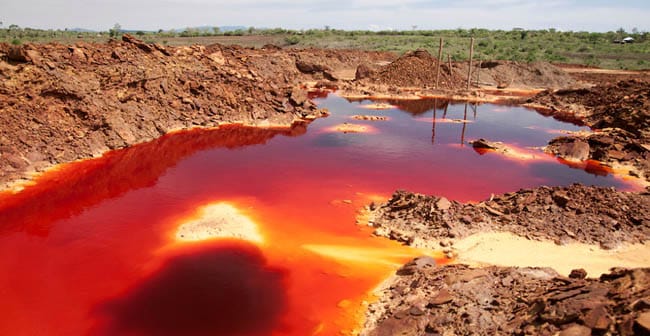A global assessment of the impacts of metal mining on rivers and floodplains, published this week in the journal Science, finds that over 23 million people worldwide are affected by potentially dangerous concentrations of toxic waste. The study offers the first comprehensive understanding of the environmental and health threats associated with metal mining activities.
The research is based on a new database of 185,000 metal mines to determine the global scale of metal mining contamination in river systems and its repercussions for human populations and livestock. It modelled contamination from all known active and inactive metal mining sites, including tailings storage facilities – used to store mine waste – and looked at potentially harmful contaminants such as lead, zinc, copper, and arsenic, which are transported downstream from mining operations, and often deposited along river channels and floodplains for extended periods.
The results highlight the widespread reach of the contamination, affecting approximately 479,200 kilometers of river channels and encompassing 164,000 square kilometers of floodplains on a global scale. Approximately 23.48 million people reside on these affected floodplains, supporting 5.72 million livestock and encompassing over 65,000 square kilometers of irrigated land.
Incomplete reporting of mine locations and tailing dam failures, particularly in China, India, and Russia, means that these figures underestimate the population at risk.
Various pathways exist for humans to become exposed to these contaminant metals including from direct exposure through skin contact, accidental ingestion, inhalation of contaminated dust, and through the consumption of contaminated water and food grown on contaminated soils.
This poses an additional hazard to the health of urban and rural communities in low-income countries and communities dependent on these rivers and floodplains, especially in regions already burdened with water-related diseases. In industrialized nations in Western Europe and the United States, metal mining contamination constitutes a major and growing constraint to water and food security, compromises vital ecosystem services, and contributes to antimicrobial resistance in the environment.
The authors say that metal mining began to contaminate river systems as early as 7000 years ago, making it humanity’s earliest and most persistent form of environmental contamination. Since the mid-19th century, tailings dams have been used to store mine waste, which has reduced the direct supply into rivers, but such structures are prone to failure, with often severe consequences for ecosystems and human communities downstream. The new study shows that the number of people exposed to contamination sourced from long-term discharge of mining waste into rivers is almost 50 times greater than the number directly affected by tailings dam failures.
(This article includes information provided by the Centre for Water and Planetary Health at the University of Lincoln, UK.)



